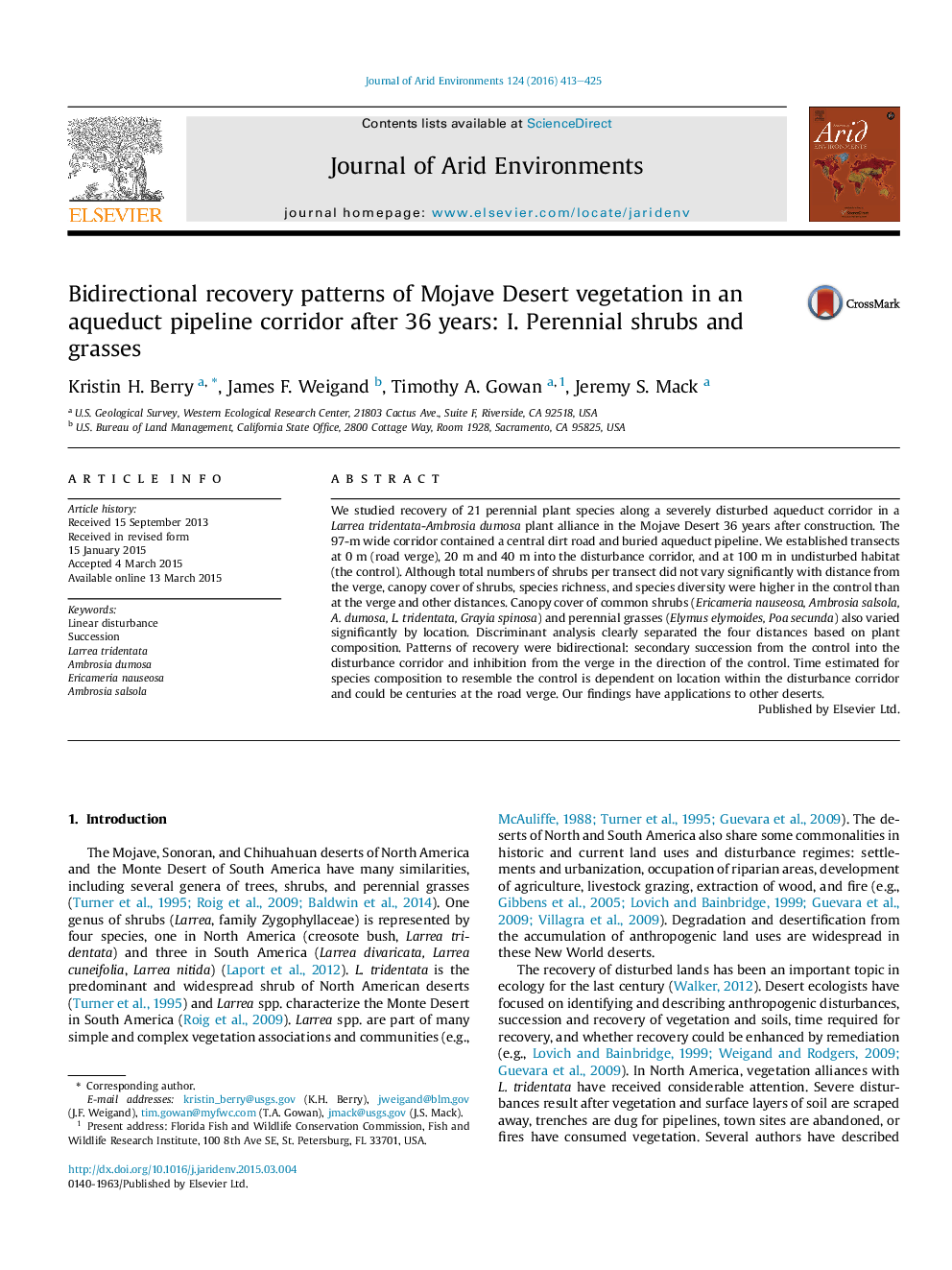| Article ID | Journal | Published Year | Pages | File Type |
|---|---|---|---|---|
| 6303380 | Journal of Arid Environments | 2016 | 13 Pages |
Abstract
We studied recovery of 21 perennial plant species along a severely disturbed aqueduct corridor in a Larrea tridentata-Ambrosia dumosa plant alliance in the Mojave Desert 36 years after construction. The 97-m wide corridor contained a central dirt road and buried aqueduct pipeline. We established transects at 0Â m (road verge), 20Â m and 40Â m into the disturbance corridor, and at 100Â m in undisturbed habitat (the control). Although total numbers of shrubs per transect did not vary significantly with distance from the verge, canopy cover of shrubs, species richness, and species diversity were higher in the control than at the verge and other distances. Canopy cover of common shrubs (Ericameria nauseosa, Ambrosia salsola, A. dumosa, L. tridentata, Grayia spinosa) and perennial grasses (Elymus elymoides, Poa secunda) also varied significantly by location. Discriminant analysis clearly separated the four distances based on plant composition. Patterns of recovery were bidirectional: secondary succession from the control into the disturbance corridor and inhibition from the verge in the direction of the control. Time estimated for species composition to resemble the control is dependent on location within the disturbance corridor and could be centuries at the road verge. Our findings have applications to other deserts.
Related Topics
Physical Sciences and Engineering
Earth and Planetary Sciences
Earth-Surface Processes
Authors
Kristin H. Berry, James F. Weigand, Timothy A. Gowan, Jeremy S. Mack,
